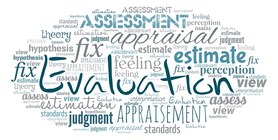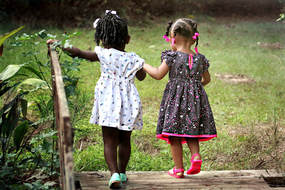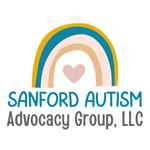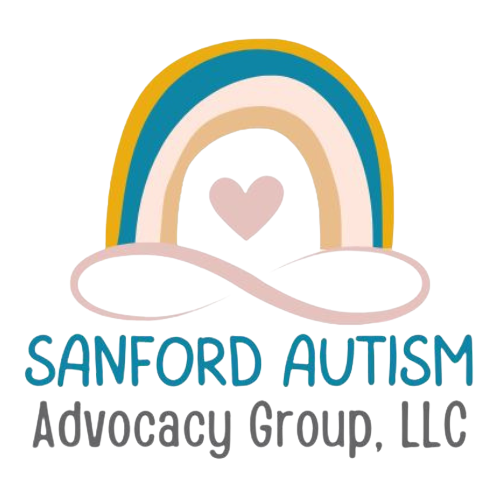|
4/2/2021 11 Comments It Shouldn't Be This Hard I’m looking at options for my son who will attend middle school next year. I’m having some uncomfortable flashbacks of what it felt like to look for preschools and later elementary schools. Somehow every transition to the next grade span is extremely difficult when you have a child with special needs! Why does it have to be this much work and so mentally draining? Most typical parents will say, “It is hard for us too.” But when you have a special needs learner you have fewer options. Many people ask me, “Why don’t you send your kids to private school?” They are usually quite surprised when I tell them private schools don’t have to take kids with special needs. They can legally say no to you just because you need support. I have heard the “We don’t take kids like yours/IEPs/special needs” lines a few times already this year. Why does it sting so much even though I already know they don’t have to take us? Seems unfair especially in this climate when equity is discussed daily. Does equity cover us? If not, why? In some ways I understand that private schools don’t have the resources but what I really want these administrators to say to families like mine is this: “We would love to give your child a chance. Can we assess him and see if this is a fit? Can we try for a week and then decide if this placement would work for all?” I am hoping for some decency here. And somehow these administrators don’t have decency or the class it takes to be kind. One woman actually said to me after I told her my son had an IEP, “Do you even want to do the tour, since we won’t take you?” I took the tour because of her insensitive comments. The sad reality is that some administrators just look the other way once you mention the words “special needs.” It still hurts to see this behavior even though I’ve become quite tough over the years. But I still want to crawl back into my fetal position when I get home and to feel that rejection alone in my bedroom. I work through the initial bitterness and then I pick myself up, smile at my beautiful children as though nothing has happened and I put some French fries and chicken nuggets into the oven. I don’t share these feelings with them because it is simply too painful and I see no good that could come from it. They are young and preserving their confidence and innocence is always important to me. Confident children do perform better in the classroom. I take the hit for the team. “Keep going, Melanie. You will find a place for them to belong.” I hate having to work this hard at something I consider so basic. Fundamentally I do get angry because this takes so much energy. Why do I have to search so hard to find a place for my children to belong? They happen to be incredible and capable learners. If I didn’t tell you he has autism or that she has dyslexia you might never guess. Meeting their needs is quite easy if you know how to teach and differentiate instruction. Some people say, “Don’t tell the school about their special needs.” Why should I have to lie about their needs? I wouldn’t even consider this option because that sends the message that having special needs is something to be ashamed of. We are proud of our son. We are proud of our daughter. And they both have special needs. We will not be ashamed of how our brains work. I will continue to teach them that they are perfect just the way they are. Actually, everyone’s brain learns differently. Yet we all have valuable contributions to make in a classroom. One of the biggest problems facing educators and schools is this: they don’t want to differentiate. They want a one size fits all approach and they expect you to fit into their one way or else hit the highway. This is especially true for private schools. Why do we accept this as a society? Why don’t we say, “No, one size does not fit all.” The only answer I can come up with is parents are afraid. They are afraid someone will reject their child. No one wants their child to be rejected. So no one says anything out of fear. It’s a terrible cycle of failing our children! I talk to special needs parents often. I try to be a supportive community member and my goal is always to be inclusive of all. Inclusion has always been important to me because I was once a teacher and I understand the beauty of creating a rich, diverse class community. I understand the importance of making everyone feel needed. Students perform better if they feel needed in their classrooms. I have seen this firsthand. I purposely made the weakest reader in the classroom the leader in a group. Kids don’t expect this and are often shocked by this decision. “He looks like a strong leader. I choose B.” Not surprisingly, B became the strongest leader. Why does this happen? It happens because we allow it to happen. Kids step up to the opportunities we give them. They shine when we believe in them. I struggle now because I am searching for a school that will say these words to me and I have yet to find it. “We want to get to know your child. We want to assess him and see what he knows and what he still needs help with. We want to meet your child and find out what his learning style is and how his brain learns best. We are excited to hear about your son. Tell us what makes him happy.” Does this kind of school or administrator exist? I am hopeful it does and I won’t stop looking until I find it. I will find a place that sends this message to our family: “Welcome. Tell us about you. You are needed here.” Every child all over the globe deserves to feel needed, wanted and included in their classroom. And we should hire educators and administrators who say, we want to meet your child wherever they are on this educational journey. No matter where you are, we will embrace you and we will help your child improve. And it shouldn’t cost $20,000 USD.
11 Comments
The assessment process for Autism Spectrum Disorder (ASD) is often confusing. While most children with ASD symptoms are identified at school and evaluated for Special Education Services or an Individualized Education Plan (IEP), many are also identified by pediatricians, therapists, or even friends and family members. Getting the most accurate diagnosis will be determined by many factors, but here are some useful ones to consider:
1. Schools, medical providers, community mental health agencies, psychologists, or neuropsychologists may be able to provide formal diagnostic assessment for ASD. In schools, a team of professionals can provide an educational diagnosis of ASD for the purposes of qualification for Special Education (to get an IEP). This is different than a medical diagnosis of ASD from a medical doctor or psychologist. A medical diagnosis might be used to provide a diagnostic code so that insurance will help pay for therapy and other services, such as Applied Behavior Analysis (ABA). 2. Parents, guardians, and caregivers should know which assessments are being used in an evaluation and why. Ask which assessments are being used (or have been used) in the assessment process. While there is no medical test for diagnosing ASD, there are many ways that professionals gather diagnostic information. They might use questionnaires, observations, interviews, and/or standardized assessment measures like an IQ test. All of this information should be used together to determine the best diagnosis and treatment for your loved one. 3. The Autism Diagnostic Observation System, 2nd Edition (ADOS-2) is the gold standard for accurate assessment and diagnosis. The ADOS-2 is completed in a one-on-one setting with a professional, sometimes with other observers to help with taking notes. The assessment looks like a series of activities and questions, depending on the age and developmental level of the person being evaluated. This assessment is the most well-researched way to determine if someone has ASD or not. 4. Rating scales, such as the Gilliam Autism Rating Scale (GARS-3) and the Autism Spectrum Rating Scales (ASRS) can provide valuable information across settings. This type of information should be collected from both home and school. These rating scales alone are not usually enough to provide an accurate diagnosis. 5. A thorough assessment for Autism Spectrum Disorder should always include evaluation of cognitive and adaptive functioning. Individuals with Autism Spectrum Disorder often have a lot of strengths and weaknesses when compared to others their same age. Due to the symptoms of ASD, many people on the spectrum have difficulty with language, social functioning, and/or self-care activities. 6. A proper diagnosis of ASD will include the level of severity, or how much support a person requires. The Diagnostic and Statistical Manual, 5th Edition (DSM-V) includes three levels of severity:
7. Many individuals with Autism Spectrum Disorder also have other diagnoses. The most common are Attention-Deficit/Hyperactivity Disorder, anxiety disorders, and depressive disorders. Each of these areas should be thoroughly evaluated prior to determining which services might be most useful. 8. A family history of Autism Spectrum Disorder, whether diagnosed or not, is important information to consider. Whichever professionals are completing the assessment for your loved one, be sure to let them know if any family members have experienced Autism Spectrum Disorder symptoms. It’s also useful to note other types of mental health problems, such as anxiety and/or depression symptoms, since these are so common in general and are particularly common for those with Autism Spectrum Disorder. 9. The rigidity of Autism Spectrum Disorder sometimes looks like Obsessive Compulsive Disorder (OCD), and vice versa. A clinician should be able to assess OCD symptoms, including obsessions and compulsions, in order to determine an accurate diagnosis. A tool such as the Children’s Yale-Brown Obsessive Compulsive Scale (CY-BOCS) can be used as an interview or questionnaire to gather this information. 10. The social withdrawal of Autism Spectrum Disorder sometimes looks like Social Anxiety Disorder, and often both diagnoses are valid. Questionnaires such as the Behavior Assessment System for Children, 3rd Edition (BASC-3) or Screen for Child Anxiety Related Disorders (SCARED) can provide professionals with useful information on various anxiety symptoms and disorders. There is no one way to assess or diagnose Autism Spectrum Disorder. Hopefully these 10 tips have given you some more knowledge and, therefore, POWER in making decisions for your loved one! Thank you to our guest blogger: Erika J. Vivyan, PhD is a Licensed Psychologist in Texas. She specializes in the assessment and treatment of school-aged children, teens, and young adults. Her areas of expertise include assessment, anxiety, and behavior. Find her on Instagram or online at drvivyan.wordpress.com. 12/10/2019 0 Comments New Foods and Spectrum Challenges Do you struggle with getting your child to try new foods? Colors, textures and smells are often startling and offensive to those who have “Spectrum” challenges. In my work as an integrative nutritionist and mental health clinician, I steer away from words like disorders and diseases because research shows that people have different learning styles and capacities in a variety of areas. It’s about the neurological wiring in the brain and what is exciting about this time in healthcare is that by shifting the diet towards inclusion of a variety of foods, there is a positive impact on the processing that takes place. But that is often where we can get stuck as parents and caregivers. Many of those with Spectrum challenges prefer little to no scent, limited textures (often soft) and bland colors and flavors – the white foods! When I work with both children and adults, I often ask what would you like more of?
With young children, we often look to their super heroes and identify characteristics that he/she may want to gain. We then talk about what foods positively affect that area of the body. Anyone remember Popeye the sailor? I may suggest trying 1-2 new foods along with having the child do some drawings for me until we meet again. I also suggest going to the market and being involved in the preparation of the food. Engage your child and if possible, others in the family, making this a family affair. While my strategies may differ somewhat with other age groups, there are a few tips that can help anyone in this process:
Repeat it over and over for the brain to learn to identify the new food – and tell your family member this – it takes time for the brain to learn to like a new food! Here’s to finding that Rainbow in life! Thank you to guest blogger Julie Freeman, MA, RD, LD, RYT (Integrative Nutritionist and Mind-Body Clinician), www.juliefreeman.net.  Do you ever wonder what goes on in your child’s mind? Or, if you are parenting a teenager, maybe you don’t want to know...I think every parent wonders what their child is thinking at times, especially when they are infants or toddlers. However, for the Autism parent, this feeling happens much more often and for a longer time span...maybe throughout their childhood or even into adulthood. I can remember working with a family once and the mother told us a devastating story at her son’s IEP (Individual Education Program) meeting. She shared that her greatest concern for her son was for him to be able to tell her about his feelings. Her son was an eight-year-old at the time who was significantly impacted by Autism and minimally-speaking. One night, when helping him with his bath, this mom noticed that her son had a terrible scratch on his leg that looked as though it had happened that day. He winced as she tended to his injury. This mom realized that her son had been injured somehow that day and was unable to tell her that he was sad, hurt, or in pain. She cried as she told us this story at the IEP meeting, and inside I cried for her, too. This was many years ago, before my own daughter “Amazing Grace” was diagnosed with Autism Spectrum Disorder. Language and communication are one of the hallmark areas of challenge for individuals with Autism. This can manifest differently from one person to another. It can be as significant as being unable to tell someone that you are hurt. However, for individuals less impacted by Autism, many still struggle to effectively discuss their feelings and the feelings of others. Though their academic vocabulary may be strong, beyond their peers, many individuals with Autism have a very immature emotional vocabulary. I recently had a moment with my daughter that typifies this concept. For several years, Grace has expressed her distaste for me when I coo and “talk” to babies that we see in stores, at parks, etc. She has mentioned to me that I should not talk to babies as that is “not my business”. However, recently when this situation occurred, Grace was able to use words to explain to me her truefeelings for the first time. She told me that when I engage with babies, she feels “sad and unloved” and she further asked “Mom, you do still love me…right?” My heart sank to think that Grace felt this way, while also feeling relief because I finally knew what had been bothering her all this time. What can we do to help? If your child with Autism struggles to share their ideas, thoughts, wants, or needs, here are a few ideas to help…
One of the greatest challenges in parenting a child with Autism Spectrum Disorders is the struggle with communication. However, with persistence, patience, and love, it is possible to effectively support our children while helping them find their voice. References: autismspeaks.org  Have you had "the talk" with your child? I am referring to a discussion about your child having Autism 😉. Many Autism parents like myself begin to contemplate having "the talk" as our children enter the mid years of elementary school. Others wait until adolescence or young adulthood. Let's briefly discuss the pros and cons... Pros: Disclosing to your child can be empowering for them. It can help them make sense of their known strengths and challenges. Disclosure can also support your parent/child relationship. Many individuals diagnosed with Autism as adults report feeling resentful towards their parents initially because their parents did not address the issue early on. Cons: Disclosure could initially evoke feelings of fear, anger or sadness. Also, older children could begin to use the diagnosis as an excuse for certain behaviors. Tips:
As you already know, each child with Autism is an awesome individual, to say the least. That being said, what works for one child or family may not work for yours. As you contemplate talking to your child about Autism, be encouraged! Trust your gut and make the decisions that work best for your child/family. Remember that clinicians and fellow Autism parents like myself are here to assist. Feel free to reach out for more information... References: Indiana Resource Center for Autism (www.iidc.indiana.edu)  Are meltdowns common at your house? It has definitely gotten better for us now that my daughter is seven. But, when she was younger, we experienced our fair share of meltdowns. These extreme reactions to small problems are typical for children on the Autism spectrum. Why? Likely due to challenges with emotional/self-regulation. Emotional regulation is the ability to monitor and control our behavior or emotions and adjust them based on the situation. For example, when we are well regulated we can cheer ourselves up when we’re sad and calm ourselves down when we’re upset. So, why do our kiddos with Autism struggle so much in this area? One reason is that individuals with Autism typically have challenges with executive functioning skills. These skills are controlled by the frontal lobe of the brain and help us to use past information to make action in the present. Executive function skills include: shifting attention, flexible thinking, inhibiting emotions and organizing/planning. Individuals with Autism also tend to have poor working memory skills and sensory sensitivities. The combination of these challenges makes it very hard to navigate the requirements of daily life and stay emotionally regulated. What can parents do to help? 1. Observe your child: Simple, but not really. Without intervening, watch how they handle the daily stressors of life. What behaviors are they currently using to cope? This will be helpful to know as you assist them in developing a plan for using more productive and "expected" behaviors. 2. Size of the Problem: Discuss the daily problems that your child typically experiences as a "range", like from 1-10. For example, a broken pencil is a 1. We have control over this situation by simply getting a new pencil. But a broken leg may be an 8 or 9. We have little control over this situation once it has happened. We must depend on others and time to help. Typically, our children with Autism go from 0-10 when problems occur without understanding the gray area in between. Also, we can discuss the expected reactions for different size problems. For example, if you break your pencil it is expected that you will just choose a new one. Crying, screaming or yelling would be unexpected in this situation. Michelle Garcia Winner has developed awesome materials to assist with teaching these concepts, found at socialthinking.com. 3. Zones of Regulation (ZOR): ZOR is a great program developed by Leah Kuypers, an Occupational Therapist (zonesofregulation.com). ZOR is a visual framework that puts words to our feelings with appropriate strategies for getting into a “good space”. 4. Social Narratives: Social narratives are short stories with and/or without pictures that honor the feelings and thoughts of the child while explicitly teaching the expected behaviors for specific situations. These stories can be developed by caregivers and clinicians with the participation of the child if possible. Carol Gray’s stories are a great example of social narratives (carolgraysocialstories.com). Over the years, we have created numerous social narratives for my daughter to help guide her through situations such as attending birthday parties and fire drills at school. Now, we keep the stories in a binder for her to review at her leisure. It is important to note, however, that social narratives should be created, discussed and reviewed prior to the target situation occurring. As for most of us, "in the moment" of the situation it may be too challenging to review strategies and successfully attain emotional regulation. Meltdowns for children with Autism are common. However, there are many strategies to help support them in building emotional regulation along their Autism journey. References: Researchautism.net; Psychologytoday.com; Education.com; www.hope-therapies.com 3/21/2018 0 Comments Special Diets for Autism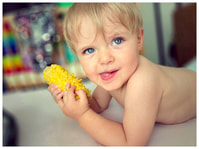 As a parent of a child with Autism, I know that we are always searching for a support, resource or strategy to help our children become the best they can be. Have you. like me, considered making dietary changes to help your child? Let's dive into the research and learn more about this topic... First of all, we must all remember that each individual with Autism is truly unique. So, what works for someone else's child may or may not work for your child. Most experts recommend a strict trial of at least three months in order to determine if a special diet will help your child. If there are no improvements after three months, you can feel secure that you have made a good effort without a major financial investment. Popular diets for individuals with Autism include:
The Gluten-free diet has been studied the most for individuals with Autism. However, more research is needed to statistically confirm the benefits. It is believed that the breakdown by-products of gluten and casein (peptides) may interact with opiod receptors in the brain, either causing or significantly increasing autistic behaviors. Studies have also shown that there are increased food antibodies (IgG and anticasein antibodies) in a subset of children with Autism who have co-existing gastrointestinal issues. Although this suggests a "gut-brain" interaction, researchers can't yet confirm the direction of this interaction. Surprisingly, gluten can currently be found in a myriad of products in the U.S. Examples of food products include: bread, cereal, pasta, cake and donuts. But, did you know that gluten can be found in many non-food products as well? Examples include: lipsticks, toothpaste, stickers, detergents and sunscreen. This is definitely something to consider when making the choice to trial a gluten-free diet. The Feingold Program is also a popular diet for children with a variety of learning and behavioral differences, including Autism and ADHD. In 1965, Dr. Ben Feingold began his studies of the link between certain foods and additives and their effect on some individuals’ behavior and ability to learn. The Feingold Program is a form of elimination diet where foods containing certain harmful additives are removed and replaced with similar foods that are free of those additives. When starting the Program, certain foods and non-food items containing an aspirin-like chemical called salicylate are also eliminated, and later tested for tolerance. Recommendations The best recommendation again is to know your child, trial changes consistently for a short time and monitor for any benefits or side effects. It is also best to work with an experienced nutritionist, dietitian, or clinician if possible with experience in Autism. References
 The call…”Mrs. Sanford, there has been an incident at school.” My heart sinks as I hear that my six-year old child with High-Functioning Autism has been the target of bullying by her peers. We immediately convene multiple meetings to address the issue and to ensure that this type of behavior does not happen again. In recent years, incidents of bullying in various degrees have filled our news and social media venues. In an article from 2000 (Counseling and Human Development), author Barry K. Weinhold stated that "bullying is the most common type of violence in contemporary US society". Statistics Research reveals that children with Autism Spectrum Disorder (ASD) unfortunately experience bullying even more than their neurotypical peers. For example, one study found that a total of 63% of 1,167 children with ASD had been bullied at some point in their lives (iancommunity.org). Another study found that those impacted by High-functioning Autism and/or Asperger's Syndrome were bullied more than children more significantly impacted by Autism. The Bullying-Autism Connection So, why is there a connection between Autism and bullying? 1. First, those who bully typically have been bullied themselves in some form. So, bullying others becomes a coping strategy for managing their own unresolved pain. 2. Because of theory of mind or “mind reading” challenges and social skill difficulties, our children with ASD become vulnerable targets for bullying. For example, they typically struggle to infer the intentions of others or have difficulty reading body language and other nonverbal cues. Those who bully find it easy to take advantage of these weaknesses. How Can We Help? There are several strategies to help decrease the incidence of bullying for our children with Autism.
The reality of bullying is far too familiar to families impacted by Autism Spectrum Disorder. As a clinician and Autism parent, I have experience from two perspectives. I believe that we can and we must do more to address bullying at various levels. Let's do what we can to see change for all, especially for our children with ASD 💙 References: https://www.iidc.indiana.edu/pages/bullying-and-students-on-the-autism-spectrum https://www.iancommunity.org/cs/ian_research_reports/ian_research_report_bullying https://www.autismspeaks.org/family-services/bullying https://carolgraysocialstories.com/about-2/carol-gray/ 2/7/2018 4 Comments Autism & FriendshipsThis month our focus is on improving various relationships impacted by Autism. One example is friendships. Starting and keeping friendships for our kids with Autism can be tough. Wondering about strategies to help?
1. Embrace Solitude: If your child falls anywhere on the Autism spectrum, then you are likely aware that they tend to be happiest when they are by themselves. As neuro-typicals, this may be hard for us to accept. However, it is vital to embrace this truth early on. It will decrease frustration and anxiety as we parent our child with their unique needs by honoring their need to be alone. This does not mean that we do not actively assist them in developing healthy relationships with others. However, this should relieve just a little bit of the pressure. 2. Structured Play Groups: These are small play groups supported by trained adults. The groups include children with and without Autism. All kids have the chance to practice good friendship skills (ex: sharing, turn-taking, etc.) in a natural environment. One example of this is Circle of Friends, a nationwide "school inclusion program that builds genuine friendships between students with special needs and their general education peers". I had the pleasure of starting a Circle of Friends chapter at a local high school many years ago and have done the same at a local middle school. The benefits seen by both children with and without special needs are priceless. You may consider talking to your child's school or special education team about starting a chapter at your school. 3. Video Modeling: As most of our children have a high interest in visuals, using videos to model and teach target behaviors (ex: greetings, playing a game, etc.) is an awesome strategy. Ideally, you should catch the moment and video your child when they are using the target behavior. Watching themselves in the video definitely helps to increase engagement. However, YouTube is also a great source for these videos that model positive friendship and social skills 4. Attend Local Events: Is your child with Autism really into Thomas the Train, dinosaurs, etc? Find local. small events at your neighborhood library, park or toy store where their passion is the theme. Your child will be able to engage with their peers and they will likely shine as the expert on the topic. This setting may also increase your child's motivation to engage with their peers since the topic is highly motivating. Another bonus: As a parent you may meet other like-minded parents and develop friendships of your own. Some San Diego resources include the San Diego Children's Museum and the Autism Tree Project Foundation. Friendships for our children with Autism may take effort, however learning and practicing key skills early on in a variety of environments may reap a lifetime of benefits. References: The Complete Guide to Asperger's Syndrome (Tony Attwood), AFIRM Modules 11/22/2017 3 Comments Just Quirky or Autism?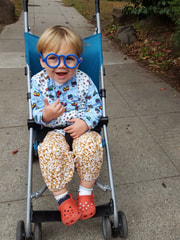 Identifying the Signs of Autism and Asperger’s Syndrome What do actors Dan Aykroyd and Daryl Hannah have in common? Both were identified with a "mild form of Autism" as young children. Both successful, but considered quirky and struggled socially. So, what is the difference in just being quirky and an actual Autism diagnosis? Recently I offered a workshop for parents and community members titled "Just Quirky or Autism?" The purpose was to raise awareness and to help in identifying the signs of Autism Spectrum Disorder. I believe that this is especially challenging yet needed for individuals with Asperger's Syndrome, now classified as Autism Spectrum Disorder-Level 1 (DSM-5, 2013) also known as "High-Functioning Autism". So many of these children and adults are misdiagnosed and misunderstood, impacting their academics, social lives and careers. So, where do we begin? First, let’s consider the term “quirky”. Merriam-Webster defines quirky as "different from the ordinary in a way that causes curiosity or suspicion". Does this describe someone you know? Before deciding, let’s look closer at High-Functioning Autism and discuss the characteristics. For consistency, we will use the term Asperger's Syndrome for the rest of this article since it is a more familiar term. Let us discuss just three factors to consider in its identification: 1. Immaturity in managing emotions Individuals with Asperger’s Syndrome have difficulty regulating their emotions and matching them appropriately to a situation. For example, their emotional response to a small situation may be very intense, such as tantruming when something falls on the floor or breaks. In girls, this may also present as separation anxiety when leaving a parent. Research reveals that those with Asperger’s Syndrome tend to be quite "black or white" emotionally or “all or nothing”. 2. Exceptional abilities in a preferred area There may be a high interest in one area, such as trains, swimming or planets for those with Asperger’s Syndrome. This interest may monopolize their thoughts and conversation. However, although cognitively intact, these individuals may struggle with attention and learning new concepts. As adults, they may be encouraged to pursue their passion in some degree as a hobby or career. 3. Sensory challenges Specific sounds, smells and tastes may be offensive to someone with Asperger's Syndrome. For example, they might avoid wearing certain clothes or eating certain foods because of the textures. Another example is covering their ears in response to or anticipation of an unpleasant sound. This sound may not be noticeable or bothersome to others, which may make their behavior seem odd. We noticed this early on in our daughter. One day at age 18 months, we noticed that she was quite fussy while riding in the backseat of the car. After several trials, we realized that she was quite irritated by the clicking sound of the fingernail clippers that I was using in the front seat. Another early example of the differences in our daughter "Amazing Grace". Research shows that most individuals with Asperger's Syndrome are identified during the early school years, as the social demands of life increase. However, many adults are now discovering the diagnosis for themselves. This is likely due to the increased visibility of Autism in the media, internet searches and/or suggestions from family and friends. Are you considering a diagnosis of Asperger's Syndrome for your child? Are you an adult considering this diagnosis for yourself? Here are a few resources: 1. Autism Speaks: Asperger's Syndrome 2. Autism Speaks: Adults References: Diagnostic and Statistical Manual of Mental Disorders (DSM-5, 2013); The Complete Guide to Asperger's Syndrome (T. Attwood, 2015); autismspeaks.org; merriam-webster.com |
AuthorCrystal Sanford, M.Ed., M.A. CCC-SLP, ASDCS is an Educational Consultant, IEP & Autism Advocate and Speech-Language Pathologist. She is also the host of inspiring podcasts, Thriving Special Families and Thriving Autism Families! Her passion is advocating STRONG alongside fellow Autism and other fellow parents of neurodiverse children, helping them to persistently pursue what their children deserve at school. In her free time, she enjoys gardening and spending time with her husband and two children in San Diego, CA. Archives
November 2023
CategoriesAll Amazing Grace Autism Info IEP Advocacy SAC Company Info Thriving Special Families Tips And Strategies |
Photos from Ivan Radic (CC BY 2.0), Ben Taylor55, Oregon State University, C. VanHook (vanhookc), Rod Waddington, bobobahmat, Ivan Radic, marcoverch, Szhlopp, quinn.anya, bennylin0724, Gamma Man, Lorie Shaull, vhines200, davidstewartgets, truewonder, wuestenigel, ecosistema urbano, Phil Scoville, Our Dream Photography (Personal), Alexander king79, Dick Thomas Johnson

